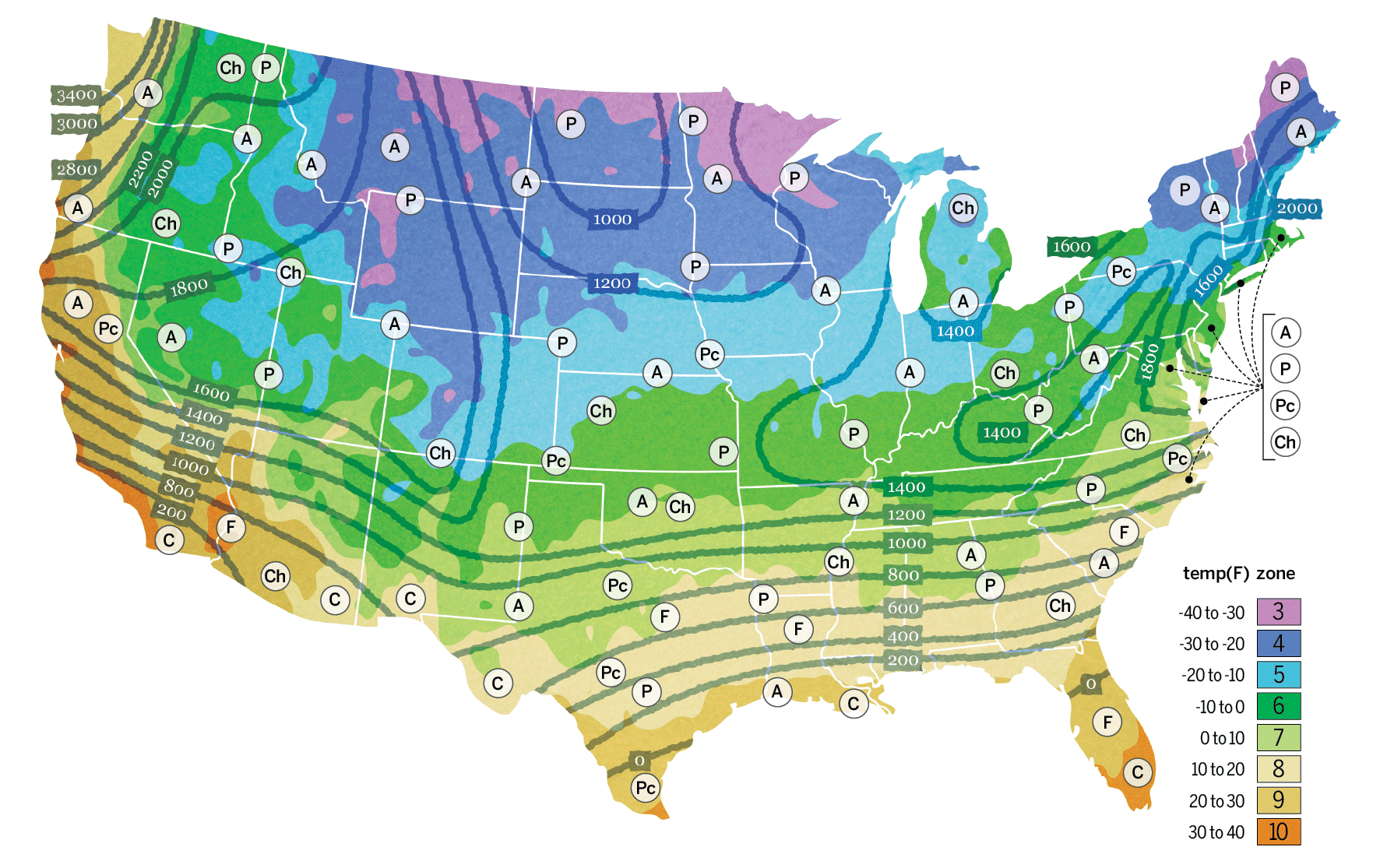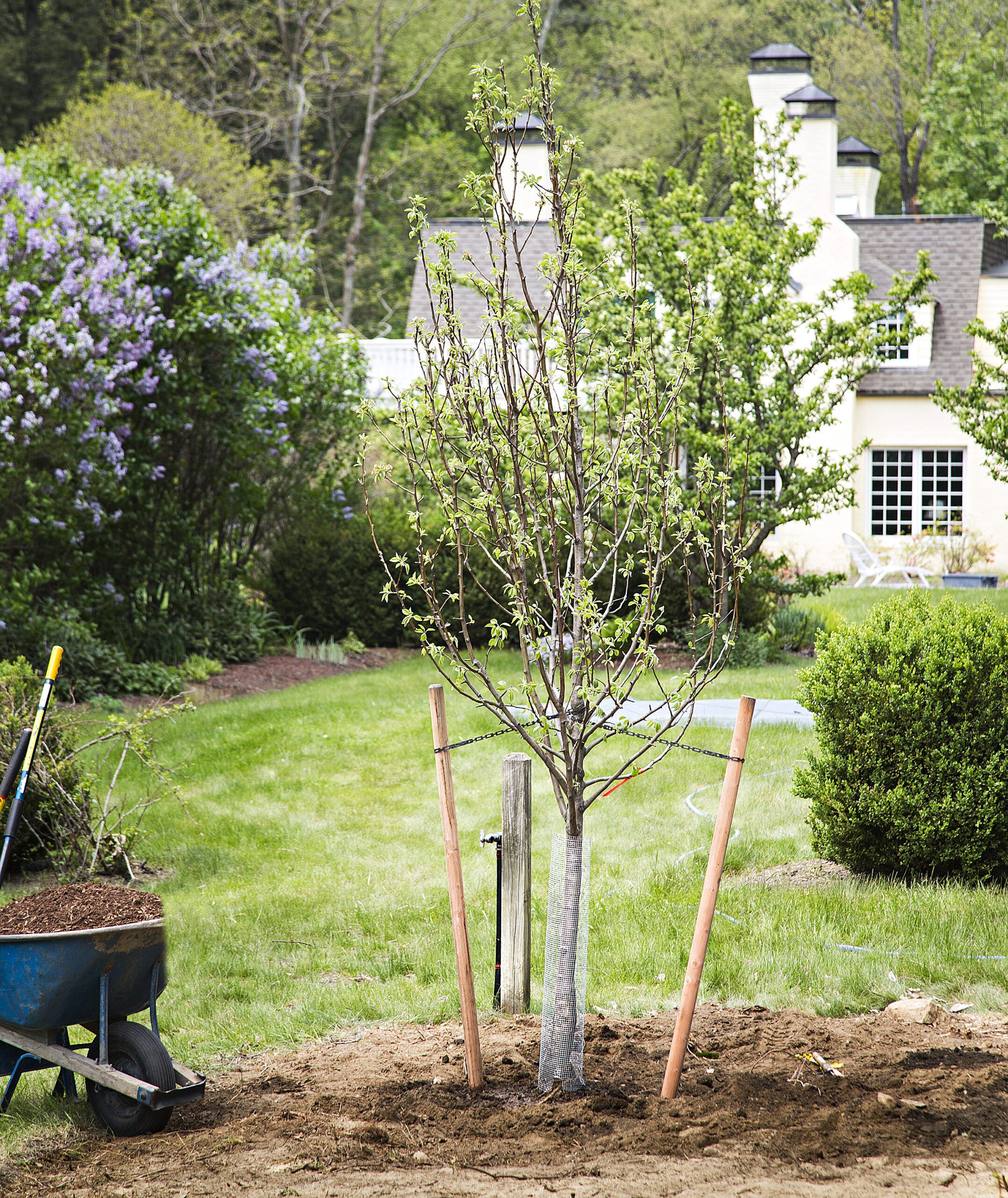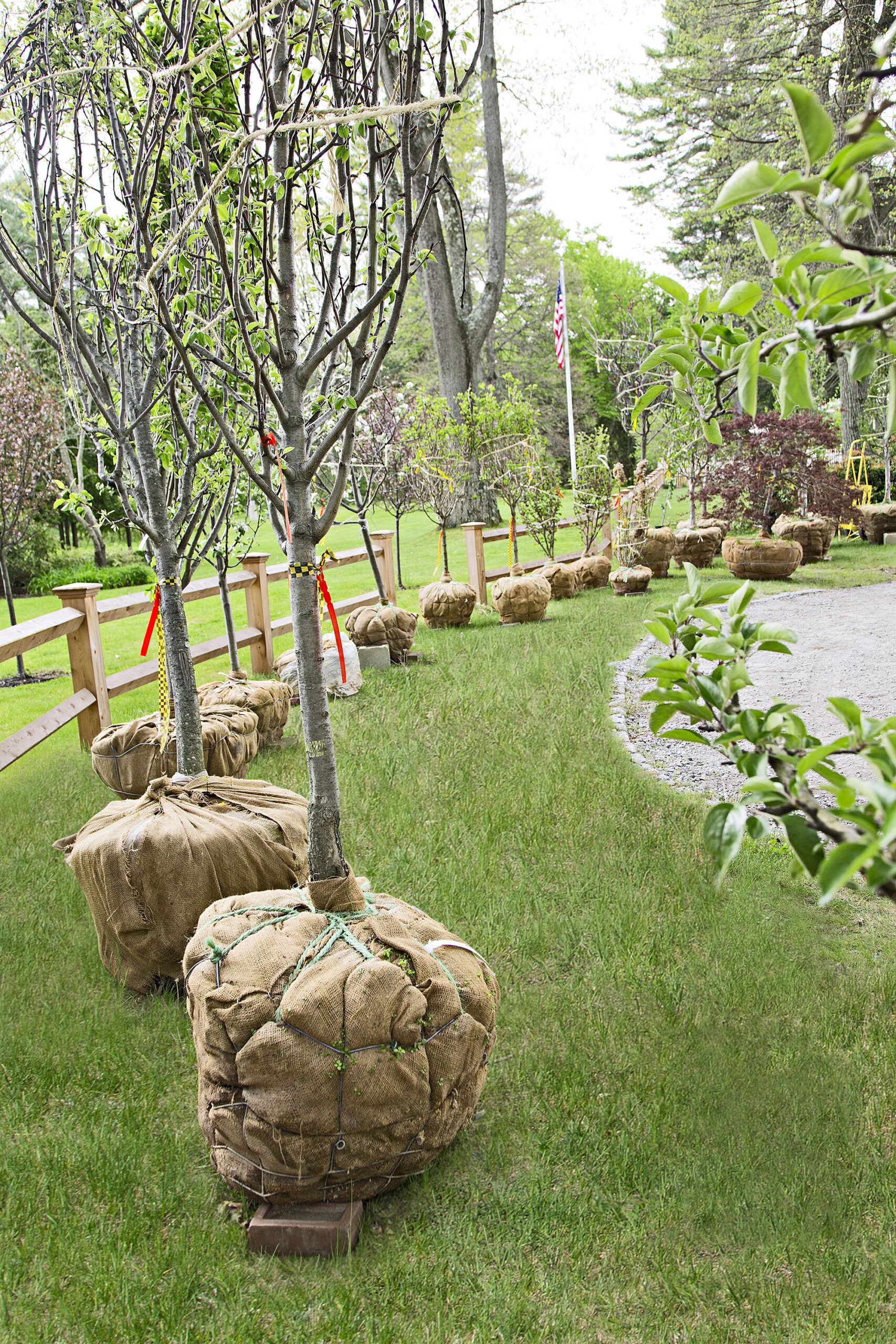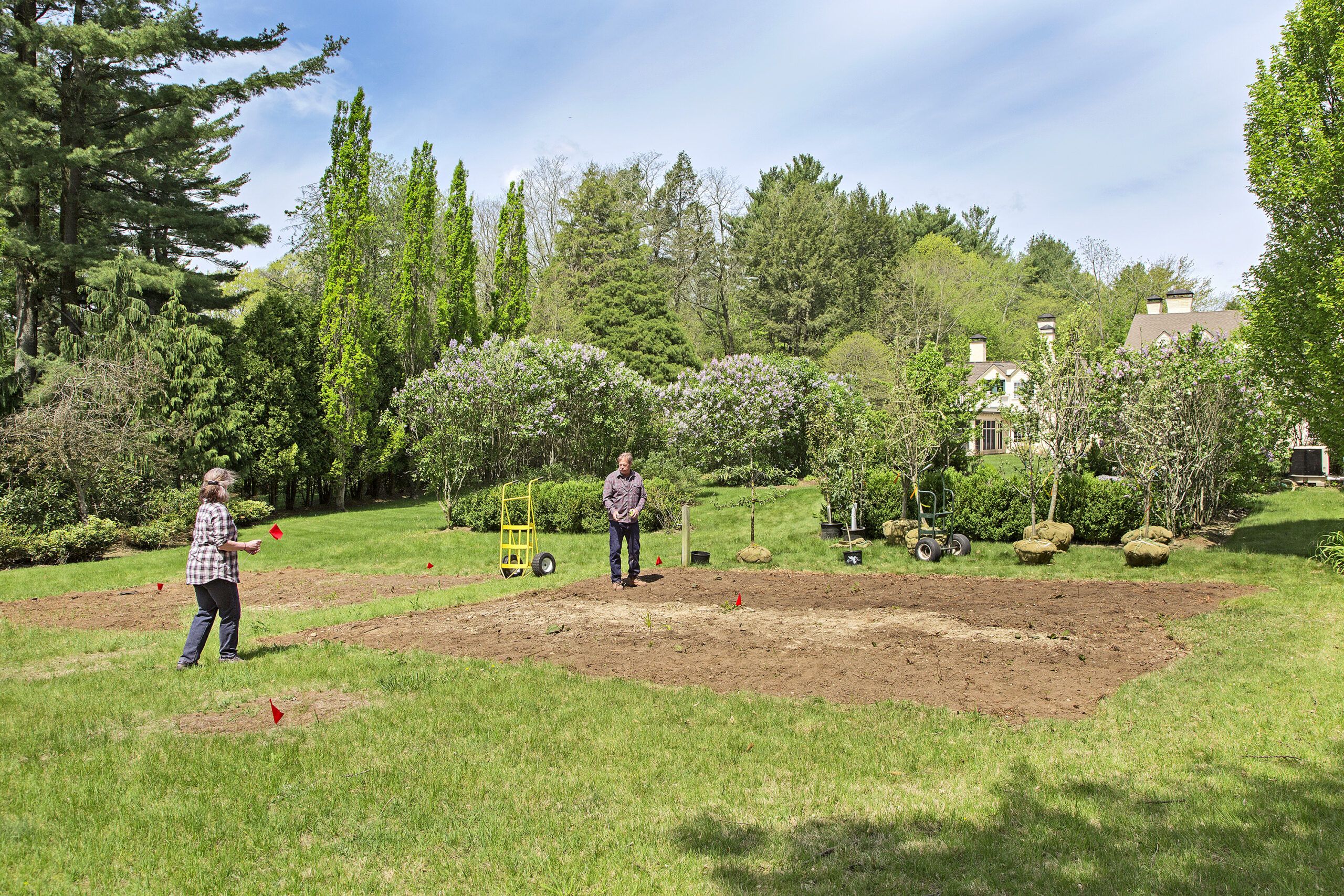Planting an orchard at home is a rewarding way to add beauty, shade, and fresh fruit to your property. With some careful planning, you can enjoy apples, peaches, and pears from your backyard. This guide covers everything from selecting the perfect site to harvesting your homegrown fruit for a thriving home orchard.
Choosing the Site for Your Orchard
The location of your orchard can affect your fruit trees’ health and productivity. When deciding where to plant your trees, consider factors such as sunlight, soil conditions, and available space.
Assessing Sunlight and Soil Conditions
Fruit trees thrive in full sun. They require at least 6–8 hours of direct sunlight daily. Find a spot that receives ample sunlight throughout the day. Well-draining soil helps with healthy root development. Conduct a soil test to determine the pH level and nutrient content of your soil. Most fruit trees thrive in neutral to slightly acidic soil with a pH between 6 and 7.
Considering Space Requirements
When planning your orchard, consider the mature size of the trees you want to plant. Standard-sized fruit trees can grow up to 25–30 feet tall and wide, while dwarf varieties may only reach 8–10 feet. Check that you have enough space for the trees to grow without overcrowding. If you have limited space, consider planting dwarf or semi-dwarf varieties. They’re perfect for smaller yards or container gardening.
Selecting the Right Fruit Trees for Your Orchard and Climate
For a successful home orchard, choose fruit trees well-suited to your climate. Consider your local growing conditions and the specific needs of different fruit tree varieties.
Understanding USDA Plant Hardiness Zones
The USDA Plant Hardiness Zone Map helps you know which fruit trees will thrive in your area. This map divides North America into zones based on average annual minimum winter temperatures. Knowing your hardiness zone will help you select trees that can withstand your local climate and produce fruit consistently.

Calculating Chill Hours for Optimal Fruit Production
As This Old House’s Roger Cook explains, “For a tree to fruit, it has to accumulate enough chill hours. That means time spent in dormancy, between 32 and 45 degrees. ” Different fruit tree varieties have varying chill hour requirements, ranging between 100 and 1,000 hours. We recommend researching the chill hour needs of the trees you’re considering and comparing them to your local climate data to make sure they’re a good match.
Fruit Tree Varieties for Home Orchards
Here are some popular fruit tree varieties to consider for your home orchard.
Apple Trees: Versatile and Popular Choices
Apples are a staple of many home orchards, and they come in a wide range of flavors. Here are some popular apple varieties:
- Fuji: Sweet and crisp, great for fresh eating
- Gala: Mild and sweet, excellent for snacking
- Honeycrisp: Exceptionally crisp and juicy
- Red delicious: Classic red apple with a mild flavor
- Spartan: Tart-sweet flavor, good for cooking and fresh eating
Most apple trees require cross-pollination, so plant at least two different varieties for optimal fruit production.
Pear Trees: European vs. Asian Varieties
Pears are another excellent addition to a home orchard. There are two main types of pears:
- Asian pears: These have a round shape and can be left to ripen on the tree. They’re known for their crisp texture and sweet flavor.
- European pears: These are the classic pear shape and are best picked when mature but still firm. Popular varieties include Bartlett and Flemish Beauty.
Like apples, most pear trees need cross-pollination for optimal fruit production.

Stone Fruits: Peaches, Cherries, and More
Stone fruits add diversity to your orchard and offer delicious summer harvests. Some options include:
- Apricots: Delicate fruits that thrive in areas with dry summers
- Cherries: Choose between sweet and sour varieties
- Peaches: Self-pollinating and perfect for warm climates
- Plums: Available in European and Japanese varieties
Additional Fruit Trees to Consider
Besides apples, pears, and stone fruits, consider adding a variety of other fruit trees to your orchard for greater diversity and extended harvesting seasons:
- Figs: Ideal for warm climates and container gardening
- Mulberries: These trees produce small, sweet fruits and are easy to grow
- Persimmons: Offer unique flavors with varieties suitable for various regions
Planning Your Orchard Layout
A well-planned orchard layout promotes better tree growth and adds beauty to your landscape.
Spacing Trees for Optimal Growth
Proper spacing is important for the health and productivity of your fruit trees. Generally, plant standard-sized trees 20–25 feet apart and dwarf varieties 8–10 feet apart. Consider each tree’s mature size and leave enough room for air circulation and easy maintenance.
Integrating Companion Plants
Companion plants provide various benefits to your orchard, such as attracting beneficial insects, suppressing weeds, and improving soil health. Consider integrating the following companion plants:
- Chamomile: Attracts beneficial insects and improves apple tree health
- Comfrey: Improves soil fertility and serves as mulch
- Marigolds: Deter pests and attract pollinators
Step-by-Step Guide to Planting Fruit Trees for Your Orchard
Follow these steps to help your fruit trees get off to a strong start in their new home.
Preparing the Soil
Before planting, prepare the soil and remove any grass or weeds from the planting area. Dig a hole that’s twice as wide as the root ball and deep enough for the roots. Loosen the soil at the bottom of the hole to encourage root growth.
Planting Techniques for Balled-and-Burlapped Trees

For balled-and-burlapped trees, follow these steps:
- Remove any wire or twine from around the trunk.
- Place the tree in the hole. The soil line on the tree should be level with the surrounding ground.
- Backfill the hole with native soil, tamping gently to remove air pockets.
- Water thoroughly until the soil settles around the roots.
Planting Techniques for Bare-Root Trees
If planting bare-root trees, follow these steps:
- Soak the roots in water for a few hours before planting.
- Prune any damaged or excessively long roots.
- Create a small mound of soil at the bottom of the hole and spread the roots evenly over the mound.
- Backfill with soil, gently tamping down to eliminate air pockets.
- Water thoroughly to help settle the soil around the roots.
Post-Planting Care and Watering
After planting, create a watering basin around the tree by building a small berm of soil. Water deeply and regularly. Mulch around the base of the tree. Keep the mulch a few inches away from the trunk. This approach prevents moisture buildup and potential rot.
Maintaining Your Home Orchard
Follow these tips to keep your fruit trees healthy and productive.
- Fertilization: Fertilize your fruit trees annually to support healthy growth and fruit production. Apply a balanced fertilizer in early spring before new growth begins. Follow the manufacturer’s instructions for application rates based on the size and age of your trees.
- Pest and disease management: Monitor your trees regularly for signs of pests or diseases. Use integrated pest management techniques, such as encouraging beneficial insects and using organic sprays.
- Pruning and training young trees: Regular pruning helps shape the tree, promotes air circulation, and encourages fruit production. Prune your trees during their dormant season, typically in late winter or early spring. For young trees, focus on establishing a strong central leader and well-spaced scaffold branches.
- Watering: Consistent watering is vital for fruit tree health, especially in the first few years after planting. Deep water your trees once a week during dry periods, ensuring the soil remains consistently moist but not waterlogged. During hot and dry spells, consider increasing the frequency to twice weekly, depending on your tree type.

